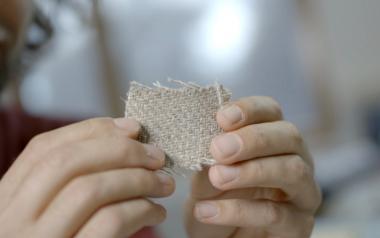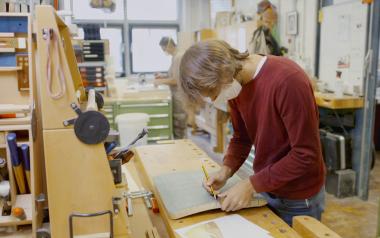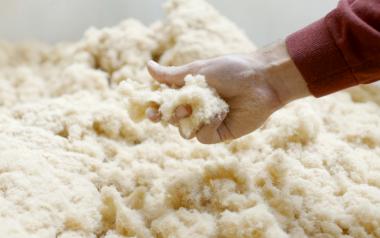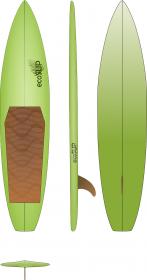From waste to secondary raw material - wetlaid nonwovens made from recycled carbon fibers
MAI Scrap SeRO | From Scrap to Secondary Ressources – Highly Orientated Wet-Laid-Nonwovens from CFRP-Waste
The »Scrap SeRO« project is an international joint project in the field of »recycling of carbon fibers«.
The technical project goal is the demonstration of a continuous process route for processing pyrolytically recycled carbon fibers (rCF) in high-performance second-life component structures. In addition to the technological level, the focus of the project is particularly on the international transfer character, in the sense of a cross-cluster initiative between the top cluster MAI Carbon (Germany) and CVC (South Korea).
Through direct cooperation between market-leading companies and research institutions of the participating cluster members, the technical project processing takes place in the context of the global challenge of recycling, as well as the need for increased resource efficiency, with reference to the economically strategic material carbon fibers.
Efficient processing of recycled carbon fibers
The technological process route within the project runs along the industrial wet-laying technology, which is comparable to classic paper production. This enables a robust production of high-quality rCF nonwovens, which are characterized, among other things, by particularly high homogeneity and stability of characteristic values.
A special development focus is on a specific process control, which allows the generation of an orientation of the individual fiber filaments in the nonwoven material.
The given preferred fiber direction of the discontinuous fiber structure opens up strong synergy effects in relation to increased packing densities, i.e. fiber volume content, as well as a significantly optimized processing behavior in relation to impregnation, forming and consolidation, in addition to a load path-oriented mechanics.
The innovative wetlaid nonwovens are then further processed into thermoset and thermoplastic semi-finished products, i.e. prepregs or organosheets, using impregnation processes that are suitable for large-scale production.
rCF tapes are produced from this in an intermediate slitting step. By means of automated fiber placement, load path-optimized preforms can be deposited, which are then consolidated into complex demonstrator components.
The process chain is monitored at key interfaces by innovative non-destructive measurement technology and supplemented by extensive characterization methods. Especially for the processing of pyrolysed recycled carbon fibers, which were recovered from end-of-life waste or PrePreg waste, for example, there are completely new potentials with significant added value compared to the current state of the art for the overall process route presented here.
International Transfer
The fundamentally global challenge of recycling and the striving for increased sustainability is strongly influenced by national recycling strategies as a result of country-specific framework conditions. The globalized way in which companies deal with high-volume material flows places additional demands on a functioning circular economy. A networked solution can only be created on the basis of and in compliance with the respective guidelines and structural factors.
In the case of the high-performance material carbon fiber, there is a particularly high technical requirement for an ecologically and economically viable recycling industry. At the same time, the specific market size already opens up interesting scaling effects and potential for market penetration.
The Scrap SeRO project connects two of the world's leading top clusters in the field of carbon composites from South Korea and Germany on the basis of a cross-cluster initiative. As part of this first promising technology project, the foundation stone for future cooperation is to be laid that supports the effective recycling of carbon fibers. The project makes an important contribution to closing the material cycle for carbon fibers and thus paves the way for renewed use in further life cycles of this high-quality and energy-intensive material.
Info »Scrap SeRO«
- Duration: 05/2019 – 04/2022
- Funding: BMBF
- Funding Amount: 2.557.000 €
National Consortium
- Fraunhofer Institute for Casting, Composite and Processing Technology IGCV
- ELG Carbon Fibre
- J.M. Voith SE & Co. KG
- Neenah Gessner
- SURAGUS GmbH
- LAMILUX Composites GmbH
- Covestro Deutschland AG
- BA Composites GmbH
- SGL Carbon
International Consortium
- KCarbon
- Hyundai
- Sangmyung University
- TERA Engineering
Fraunhofer Institute Fraunhofer IGVC Composites wetlaid nonwovens carbon fibers Recycling
Fraunhofer Institute for Casting, Composite and Processing Technology IGCV








